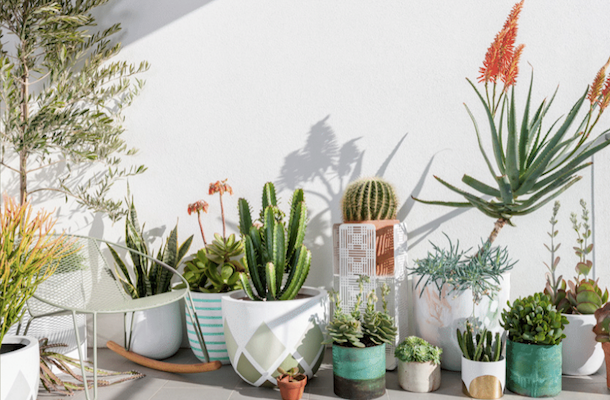Is it time to think about ‘organic indoor air’?

In the last few decades the consumption of organic produce has sky-rocketed as consumers realise the benefits of reducing their exposure to toxins. In the EU alone, the area under organic cultivation grew 6% per year between 2002 and 2015
But what about the toxins that surround us from new building materials and indoor environments? If we are concerned about the toxins we eat, shouldn’t we be concerned about the toxins we breath?
In recent research conducted between RMIT University and University of Melbourne we explored this question so that our findings could be integrated into the Plant Life Balance app, that can help consumers decide how to clean their indoor air.
Exposure to indoor pollutants can lead to adverse health outcomes such as pulmonary diseases and Sick Building Syndrome. These sicknesses result from exposure to particulate matter and volatile organic compounds respectively. Common symptoms include tiredness and drowsiness without an apparent reason, difficulty breathing, restlessness, inability to concentrate or focus, irritation of the eyes, throat, and nose. Furthermore, the effects disappear when leaving the room.
A vast range of literature over 35 years has shown that indoor plants can reduce the levels of particulate matter, nitrous oxides, carbon dioxide and volatile organic compounds such as toluene, benzene and xylene. Whether an individual will be affected by a contaminant depends upon: the contaminant concentrations and the individual’s sensitivity to that contaminant; the current state of their psychological and physical health; and, the duration and frequency of exposure.
We aimed to collate and capture this vast range of multiple benefits and integrate this into an index, funded by Hort Innovation. Not only do plants alleviate air pollution in a moderately predictable way but they can also benefit people psychologically. We decided to split the index into benefits related to psychological well-being and air pollution. The final step in the research was to integrate this index into the app. The app’s augmented reality environment allows users to choose between different plants and observe their indoor air quality and well-being rating improve as more plants are added.
We hope that this will make a contribution to further designing urban spaces around plants, nature and the benefits they bring. The organic food movement provides a model for how this can be achieved. In 1967 the UK’s Soil Association introduced the World’s first organic certification system with the original aim of redesigning agriculture around soil and plants.
The continued popularity of organic food is a testament to the power of this idea as well as the role of a certification scheme. As the population of urban dwellers increases worldwide there is a tendency is to lose contact with nature leading to a so-called ‘nature deficit disorder’.
If we emphasise the health of plants and soil in the design of our indoor environments using tools such as the Plant Life Balance app, the benefits that plants bring will follow. Combining this with a certification scheme for ‘organic indoor air’ could radically change the lived reality of our increasingly urbanised world.
This article has been co-authored by Marco Amati (RMIT), Dr Dominique Hes (UniMelb) and Cris Hernandez (UniMelb).
Marco Amati is an environmental scientist and urban planner with a long-standing interest in green infrastructure. His most recent book is The City and Superorganism: a history of naturalism in urban planning.











Max Thomas
November 25, 2017 at 8:08 am
Clearing the Air
Thank you Marco for your interesting piece. As you say, indoor air quality has been studied for a long time and the health implications are fairly well understood. My only concern is that the health benefits of indoor plants could be seen as a ‘cure-all’ or ‘quick fix’ to circumvent behavioural change. We all tend to resist change and will readily adopt ‘convenient’ and even self-deceptive measures; it is a very human response. I suppose rejection of clear scientific evidence of climate change is the most obvious example but over-reliance on U/V blocking skin lotions is a growing problem.
I like your reference to ‘organic’ indoor air as a way of drawing attention to the issue. However, the prospect of magical properties being ascribed to indoor plants is worrying. People still believe that water somehow ‘purifies’ itself with x metres downstream of a pollution source or that ‘natural’ products are essentially harmless. As you would know, ‘natural’ cleaning products, insect sprays, gas heaters, solid fuel open fires, pets and e-cigarette smoke etc. can produce highly polluted indoor atmosphere. A certification scheme that would include indoor plants as a means of maintaining acceptable indoor air quality would need to be accompanied by on-going education. I can see how that might be done in public or commercial buildings but widespread, on-ongoing compliance in households is another thing.